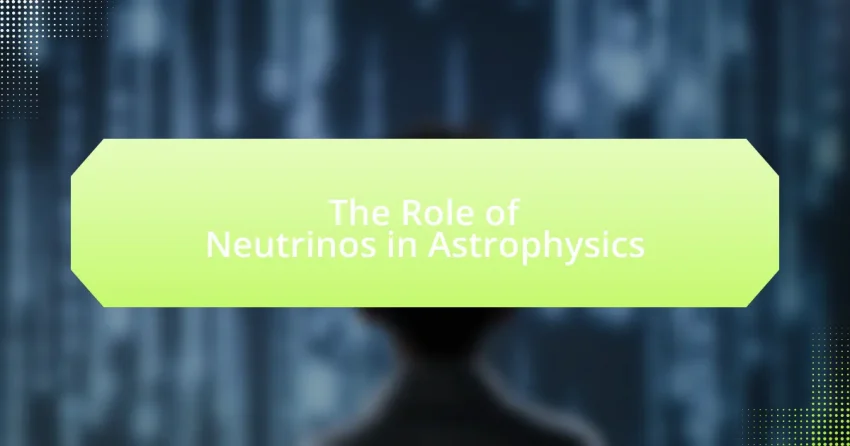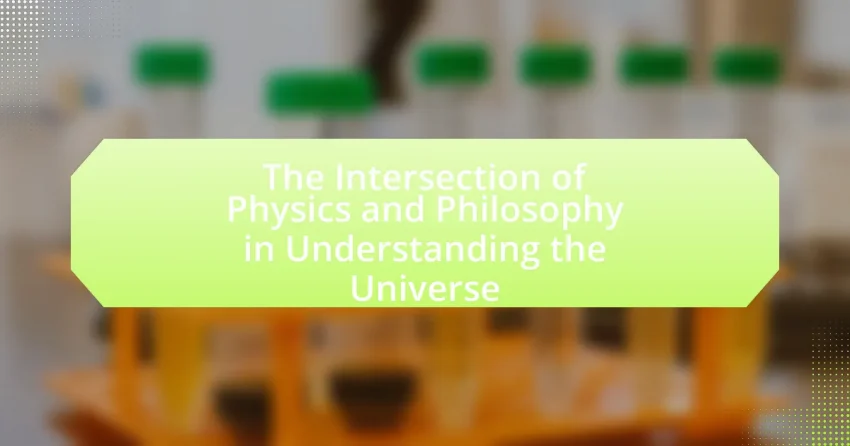Neutrinos are subatomic particles with negligible mass and no electric charge, generated in nuclear reactions such as those in stars and during supernovae. Their unique properties, including weak interaction with matter and the ability to oscillate between different types, make them crucial for understanding astrophysical phenomena. This article explores the significance of neutrinos in astrophysics,…
The Role of Gravity in the Structure of the Universe
The article focuses on the role of gravity in shaping the structure of the universe. It explains how gravity governs the attraction between masses, leading to the formation of galaxies, stars, and planetary systems. Key processes involved in gravitational attraction, the lifecycle of stars, and the stability of galaxies are discussed, along with the influence…
The Physics of Cosmic Rays: Origins and Effects
Cosmic rays are high-energy particles from outer space, primarily composed of protons, atomic nuclei, and electrons, traveling at nearly the speed of light. This article explores the origins of cosmic rays, which include supernova explosions and active galactic nuclei, and their classification into primary, secondary, and solar cosmic rays. It discusses the significant effects of…
The Interaction Between Light and Matter: A Fundamental Concept
The article focuses on the interaction between light and matter, a fundamental concept in physics that encompasses processes such as absorption, emission, scattering, and transmission of light by various materials. It explains how these interactions are governed by principles of quantum mechanics and electromagnetic theory, influencing phenomena like photosynthesis, color perception, and technological applications in…
The Importance of Spectroscopy in Astronomy
Spectroscopy is a critical technique in astronomy that studies the interaction between light and matter, enabling the analysis of celestial objects’ composition, temperature, density, and motion. This article explores the fundamental principles of spectroscopy, including absorption and emission spectra, and their applications in identifying chemical elements in stars and galaxies. It also discusses the various…
The Intersection of Physics and Philosophy in Understanding the Universe
The article explores the intersection of physics and philosophy in understanding the universe, highlighting how both disciplines address fundamental questions about existence, reality, and the nature of the cosmos. It examines the complementary roles of physics, which provides empirical data and theories, and philosophy, which critically analyzes the implications of these theories. Key topics include…
The Influence of Dark Energy on Cosmic Expansion
Dark energy is a mysterious form of energy that constitutes approximately 68% of the universe and plays a crucial role in driving its accelerated expansion. This article explores the influence of dark energy on cosmic expansion, detailing how it exerts a negative pressure that counteracts gravitational forces, leading to an increasing rate of expansion observed…
The Future of Space Exploration: Challenges in Astrophysics Education
The article focuses on the future of space exploration and the challenges faced in astrophysics education. It highlights key aspects such as technological advancements, international collaboration, and sustainable practices that are shaping space missions. The discussion includes the role of robotics and AI, advancements in propulsion systems, and the importance of partnerships among countries and…
The Impact of Space Weather on Earth’s Technology
The article examines the significant impact of space weather on Earth’s technology, focusing on how solar flares, coronal mass ejections, and geomagnetic storms disrupt satellite operations, communication systems, and power grids. It highlights historical events, such as the 1989 geomagnetic storm that caused a major blackout in Quebec, illustrating the vulnerabilities of modern infrastructure. The…
How Telescopes Have Revolutionized Our Understanding of Space
Telescopes have revolutionized our understanding of space by enabling detailed observations of celestial objects beyond the capabilities of the naked eye. The article explores the historical development of telescopes, starting from Galileo’s refracting telescope to modern advancements like the Hubble Space Telescope and upcoming technologies such as the James Webb Space Telescope. Key topics include…









